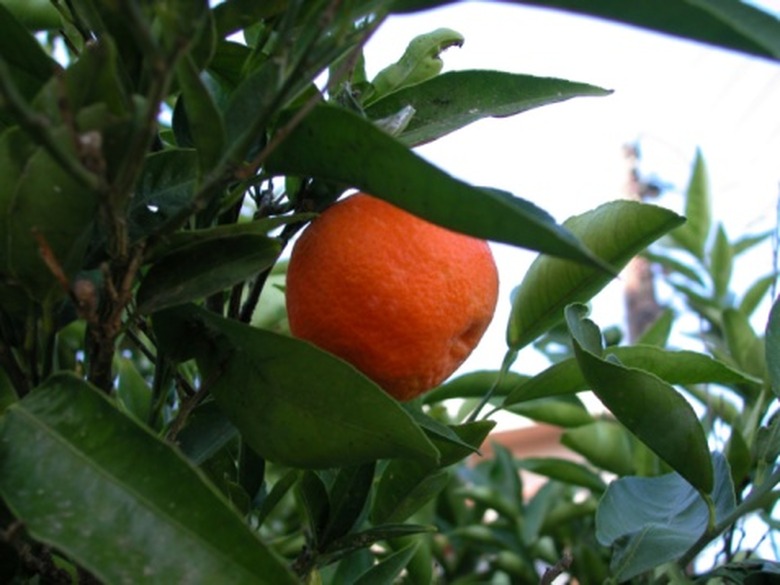How To Grow Satsumas From Seeds
Things Needed
- Cup
- Gibberellic acid powder (optional)
- Seed tray
- Potting soil
- Sand
- Organic compost
- Containers
Warning
Be aware that growing satsumas from seed requires about seven years from sprout to first fruit. You must also have more than one tree in order for cross-pollination and fruit production to occur.
Satsuma orange (Citrus reticulata) is also called the mandarin orange. It is extremely cold tolerant and produces fine-tasting fruit when it receives adequate moisture and full sun, according to Texas A&M University. Satsuma orange trees, like all fruit trees, are best propagated by grafting. That doesn't mean you can't grow one from seed. It just means that you may not get a tree of the same quality as the mother plant in either vitality or fruit production.
Step 1
Buy several satsuma oranges in spring. They are virtually seedless, so buying several will increase your chances of finding viable seeds. Peel the oranges apart with your fingers and dig out the seeds.
- Satsuma orange (Citrus reticulata) is also called the mandarin orange.
- It just means that you may not get a tree of the same quality as the mother plant in either vitality or fruit production.
Step 2
Fill a cup with water, add a pinch of gibberellic acid powder and mix well. Drop the satsuma seeds in the mixture and let them soak for 24 hours. You don't have to use gibberellic acid, but it helps orange seeds germinate quickly, according to the University of California Davis.
Step 3
Fill a seed tray with equal parts moist organic compost, sand and potting soil. Sow the seeds directly on top of the soil mix. Cover with 5/8 inch of sand and place in a sunny, warm area. Keep the seed tray uniformly moist, and the Satsuma seeds will germinate and sprout within four weeks if they are viable.
- Fill a cup with water, add a pinch of gibberellic acid powder and mix well.
- Keep the seed tray uniformly moist, and the Satsuma seeds will germinate and sprout within four weeks if they are viable.
Step 4
Each seed will produce up to three sprouts. Clip away all but the most vigorous sprout. Transfer each sprout from the seed tray into its own container of potting soil. Poke a hole with a pencil into the soil and set the sprout's root in the hole. Tamp it down with your finger to ensure firm contact.
Step 5
Continue watering the satsuma seedlings throughout the growing season, allowing them to dry out slightly between waterings. Transplant them to larger containers when they outgrow their current containers.
- Each seed will produce up to three sprouts.
- Poke a hole with a pencil into the soil and set the sprout's root in the hole.
Step 6
Transfer satsuma seedlings to full sun and moist, well-drained soil outdoors only if you live in U.S. Department of Agriculture hardiness zones 7 and above. For zones 6 and below, satsumas are best grown as container trees that can be moved inside in cold weather.
